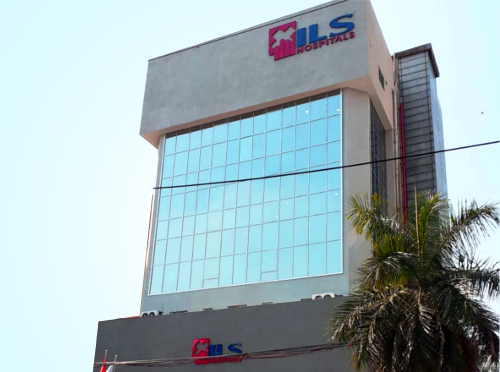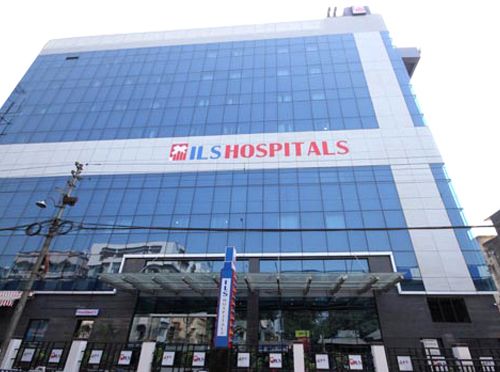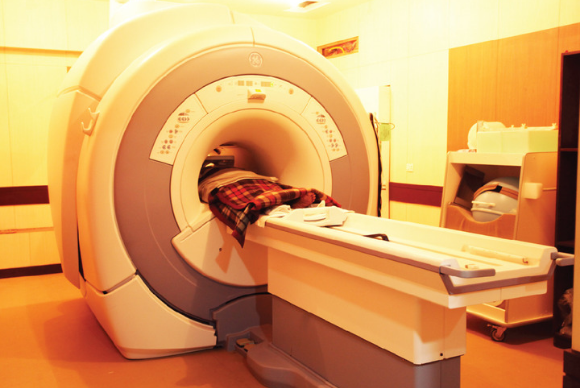5 Facts About PCOS Every Women Should Be Aware Of
Polycystic Ovary Syndrome (PCOS) is a condition in which a woman’s body starts to secrete male-sex hormones in a much higher level than ideally should be. As a result, it starts interrupting menstrual cycles and makes the chances of natural conception quite challenging. Here we present some useful facts as per the gynecologists that every woman should be aware of. So let’s begin.
Fact 1 – PCOS Will Leave You More Tired Than You Can Imagine
PCOS not only stresses gynecological health but overall health as well. It makes them feel drenched of energy and experience persistent fatigue. For many women, this severe lethargy lasts particularly during the menstruation cycle, while for others it is pretty much the same, in general.
Fact 2 – PCOS Is Quite Common
In case someone is dealing with PCOS and have to take the day off, while their peers are enjoying everyday life, it is impossible ‘not be feel burdened’ by this unwanted condition. But it the reality, PCOS is a very common condition among women of childbearing age, as per gynecologists. In fact, many women live with PCOS that often stays undiagnosed as they lead a normal life.
Fact 3 – PCOS Cannot Be Cured. But It Can Be Treated
As per gynecologists, medical science is yet to find a complete cure for PCOS. However, good hospitals offer quality treatment for it. This includes managing symptoms by following a balanced diet, taking prescribed supplements and leading a healthy life overall.
Fact 4 – PCOS Needs Prolonged Treatment
As already mentioned, PCOS cannot be cured. Thus, it is crucial to avail its treatment for a prolonged period of time. As PCOS is considered as a condition affecting the women of childbearing age, so they let their guard down when they pass this stage. However, it is highly recommended to keep treating the symptoms even when they hit menopause or are currently pregnant.
Fact 5 – Natural Conception Is Possible Even With PCOS
Though it is common for women with PCOS to struggle to have a baby without any medical aid but it is NOT impossible. Many women successfully conceive even with PCOS. Besides, with advanced artificial reproductive techniques, the chances of having a successful conception are quite high.
At ILS Hospitals, our expert gynecologists offer the best treatment for women dealing with PCOS and other gynecological conditions effectively.
Importance Of High-End Diagnostics Under One Roof
Radiology is a special branch of medical science that uses imaging and other advanced techniques to detect the presence of any medical abnormality or illness. It can also be used to study the structure and functionality of any organ. Simultaneously, many a time, it can be availed to evaluate the effectiveness of a certain treatment. Needless to say, there are several types of radiology procedures and each of them has its own importance.
Some of the most common diagnostic techniques are as follows-
- Blood profile screenings
- X-ray
- Computed Tomography (CT scan)
- Fluoroscopy
- MRI
- Mammography
- Ultrasonography
- ECG
- Echocardiogram
- Exercise stress test
- Cath Lab
But it is even more beneficial for overall treatment when all the diagnostic procedures are available within a vicinity itself. Let’s explain it in details.
If you are dealing with a case of cavities in your teeth, a regular oral x-ray is adequate but often it is not the case for many other patients were having all diagnostic services under one roof is particularly helpful. For instance, a patient complaining of the persistent palpitation might simply be suspected of having high cholesterol at first. Thereby the only screening they might suggest is a blood cholesterol profile. However, persistent palpitation can be a result of several cardiac complications as well. Especially for an aging patient, a thorough investigation is required to determine the exact cause. These Cardiac health evaluations might comprise Electrocardiography, Echocardiogram, Exercise Stress Test and more. Needless to say, having them all in one place helps a lot.
It might also happen that a patient referred for an X-ray might reveal of having some metal implants inside their body right before undergoing the screening. Having a multispecialty radiology facility will enable the healthcare personnel to arrange for some other alternative radiology like an MRI or USG scan for the patient, without losing any precious moments
Moreover, going for a particular path lab is ideal for elective diagnosis. For instance, the routine diabetes checkup can be availed at any standard pathology center or even the sample collection at home works fine as well. However, in case of any accidental injury or medical emergency, it is difficult to predict in advance, exactly which tests are going to be recommended. Thus, having as many of them can be a life-saving factor.
ILS Hospitals offers high-end diagnostic services, all under the same roof. We offer diagnostic services for a wide range of medical specialties. We are equipped with the best-in-class diagnostic equipment and expert radiologists. We furthermore ensure that all our radiology procedures are carried as per standard guidelines and under the expert supervision of radiologists.
Guidelines To Follow Before Undergoing X-Ray
Medical science has evolved drastically over the past few decades. Advanced radiology is one such crucial aspect that plays an important role in the overall treatment process. The diagnostic technique we all had undergone at least one in our lives is the x-ray. X-ray is an imaging technique that uses ionizing radiation to pass through the body and capture images accordingly. It is mostly used to determine the extent of bone and joint damage on a recommendation from orthopedic clinics, but it also can be used to evaluate certain kinds of a pathogen-based health condition or to study any structural deformities of some organs. Let’s go through the guidelines you need to follow before undergoing an X-ray imaging.
Read more – All About X-Ray Tests And Its Scope
X-ray can be done for many organs and thus the actual guidelines may vary from case to case. However, in general, the following guidelines are to be followed for any x-ray imaging.
1. X-ray diagnosis is carried out either in the doctor’s chamber, diagnostic center or the diagnostic section of multispecialty hospitals. So, the patient must reach the spot, preferably a little in advance.
2. The patient needs to remove all the pieces of jewellery, eyeglasses and accessories like watches, cell phones etc. outside the radiology chamber.
3. The patient needs to inform the radiologist or the doctor beforehand, in case they have any surgical metal implants currently on them. These include any orthopedic metal joints, pacemakers, surgical mesh and wiring etc. Females patients also need to inform in case they are currently pregnant or even suspecting the possibility. They also must inform if they have surgical contraceptive implanted currently.
4. The patient needs to undress and wear a gown on the region that is supposed to have an x-ray. The patient are provided with a gown by the centre.
5. The patient might be given some contrast medium in certain kinds of x-ray tests. For that, they need to receive an injection or have to swallow the medium orally.
6. The patient is then guided towards the machine and helped to be positioned in the correct posture.
7. When instructed, the patient needs to stay still and might need to hold their breath momentarily, in some particular cases. This step ensures the images do not get blurry and feature the accurate details effectively.
X-ray is a painless procedure that takes only a few minutes for orthopaedic and other diagnostic purposes but might need more than an hour for x-ray involving contrast mediums. ILS Hospitals offers accurate and advance X-ray scan for every medical need.
3 Most Congenital Heart Disorders as per Experts Cardiologists
Heart ailments are becoming extremely prevalent these days. While some of these are acquired due to a sedentary lifestyle or some underlying illnesses, some heart defects are present from the time of birth itself. These are referred to as congenital heart diseases. A heart specialist can detect and address them timely. Let us discuss some common congenital heart diseases, in brief, but let’s first understand the structure of heart a little.
The heart is a pumping device of the body. It contains 4 valves, the upper chambers are called left and right auricles and lower chambers are called left and right ventricles. The blood circulated between the ‘body and the heart’ and between the ‘lung and the heart’ to facilitate the exchange of oxygen and carbon dioxide in the body.
Here we present the 3 most common congenital defects as explained by cardiologists.
1. Ventricular Septal Defect (VSD)
Almost 2 in every 10 cases of congenital birth defects is due to ventricular septal defect. VSDs are holes that are present between the lowers two ventricles of the heart. The size might vary from tiny to large and so is its severity (the larger the hole, the more the chances of the baby to develop cardiac ailments). It can be diagnosed by tracing an extra heartbeat in the cardiac cycle, but several babies show no symptoms, making its diagnosis quite tricky.
2. Pulmonary Valve Stenosis
It is a group of illnesses that are characterized by the ineffective flow of blood from the right ventricle to the lungs. Often it is due to the abnormal structure of the heart valves (which ensures the backflow of blood does not occur). These deformities lead to over-exhaustion of the ventricular muscle and cause extra pressure built up on the right side of the heart. Apart from a murmur, an echocardiogram might be needed to diagnose it effectively.
3. Aortic Valve Stenosis
This heart deformity comprises of a significant proportion of congenital heart defects. It develops within the first 8 weeks of pregnancy. The defect arises in the aortic valve (the final valve junction before the blood is pumped out of the heart. This obstruction can cause pressure build in the heart that can lead to thickening of the muscle and over the time, it can lead to enlargement of the heart. Aortic valve stenosis is detected more effectively through an echocardiogram. Cardiac catheterization or surgery might be required for its treatment.
Read more – Importance Of Cath Lab and Cardiac Catheterization
At ILS Hospitals, we address congenital defects for both inborn and outborn babies. Look out for the symptoms such as bluish skin, rapid breathing, fatigue and poor weight gain in your baby, consider getting a consultation with a pediatrician. The timely measure can treat them all effectively, while unresolved congenital defects might pose as a threat in the future.
Angina – Symptoms, Diagnosis, And Treatments
The heart’s functions play an important role in the body. Its malfunctions can lead to major medical threats. Heart attack and cardiac arrest count as cardiac emergencies and should be addressed at the earliest. Often these onsets due to the presence of some long-term unresolved cardiac conditions. Angina is one such underlying heart condition. Let’s understand all its aspects in brief.
Angina is characterized by feeling pain, discomfort or tightness in the chest. It occurs when the cardiac tissues do not get an adequate amount of oxygen.
Symptoms of Angina
Angina is easily recognizable due to the presence of the following symptoms, prominently on the chest region-
- Pain
- Tightness
- Burning Sensation
- Heartburn
- Pain that spreads to jaws, neck, shoulder or back
It can also be accompanied by secondary symptoms such as weakness, indigestion, nausea, cramping, sweating, etc. These discomforts may last in between a few minutes to several hours.

Diagnosis Of Angina
An accurate diagnosis of angina is crucial to resolve it for good. The following diagnostic approaches are carried out to diagnose angina and its degree of severity.
- Stress Test – It monitors the activity of heart performing under duress. It is estimated while the patient is in between physical stress.
- Chest X-ray – This imaging technique shows the structures inside the heart to look for the possible cause of the setting angina.
- Coronary Angioplasty – It uses special dye and x-ray technique to visualize the inside of the coronary arteries.
- Electrogram – It uses special equipment to record the electric activity of the heart to trace the amount of the oxygen it is getting.
Apart from these, the expert cardiologist or the pathologist will look for blood profile screening to evaluate the level of cholesterol and other factors. It often also involves evaluating family history and personal history.

Treatment Of Angina
The treatment approach of angina aims to treat the pain, ease symptoms, and discomfort, it also minimizes its chances of causing more severe threats in the future. It includes several lifestyle changes such as quitting smoking, losing weight, keeping cholesterol levels in check, dealing with stress effectively and other measures. However, often several medications are also advised to keep blood pressure profile in check. In fact, nowadays, coronary angioplasty and bypass are recommended for many patients dealing with persistent angina.
Angina itself is not a medical threat, but it is unwise to leave it untreated.
6 New Year Resolution To Have A Healthy Life Ahead
Another year passed and this new year is giving us yet another opportunity to stay healthy and disease-free. So, here we offer some new year resolutions to follow in order to have a healthy year ahead.
1. Lose Weight To Gain Health

Make this your 1st mantra this year. Unless your BMI is classified as normal, you should attempt to shed the extra pounds that are slowing you down and eroding your health away. Consider a bariatric surgery, if you fall under the morbidly obese category. It is completely safe, effective and many times resolves obesity-associated complications as well.
2. Go Smokeless

Let go off that burning cigar that is eating away your health. Quit smoking this year. Even if you have attempted and failed earlier, pledge to do it for sure now. Take help if required, considering nicotine patch and gums or even rehabilitation. Life is better without the smoke for you and for your loved ones.
3. Catch Up With Your Sleep

This one is going to be somewhat a piece of cake. It might come as a surprise that you might not be seeping as much as you ideally should. Sleep deprivation is a rather common issue among youth these days. Aim to get a sound sleep for about 6 to 8 hours each day. However, don’t overdo it on the weekend. It is equally bad for you.
4. Shoo Away The Stress

Stress is becoming the new best friend of many individuals that insists ‘never’ to leave our side, isn’t it! This new year try to keep stress away as much as possible. Find ways to cut stress away from your life. Try meditation, pursuing hobbies and other tips and tricks. Try everything that makes you smile more than you frown.
5. Dedicate 30 Mins For Health

In this 24 hour cycle, take out 30 minutes each day to make the best out of it for your health. Let it be cycling, jogging, yoga, swimming or gyming. Spend 30 minutes each day that will contribute towards a healthier tomorrow.
6. Seek Doctor’s Advice

Not every sore throat can be fixed with a ginger-honey tea, especially not if you are a chain smoker and also losing the sensation of taste gradually. No matter how small medical problem you encounter, seek advice from a doctor if a particular problem persists for more than 6 weeks.
So, are you ready with your new year resolution! Start as many as them you can. Stay healthy to be happy.
Importance Of Cath Lab and Cardiac Catheterization
Cardiac Catheterization Lab is an advanced diagnostic room equipped with several apparatus, which can help the technician to visualize the structure and condition of the arteries along with the chambers of the heart in order to detect the presence (and extent) of any abnormality. Let us understand its importance in details.
Cardiac Catheterization is a non-invasive procedure that uses a thin, hollow cannula to penetrate through blood vessels reaching the heart. The procedure involves using a contrast dye, and its effect can be seen through an x-ray imaging simultaneously. As this procedure uses a blood vessel originating from the wrist or leg towards the heart, it causes no trauma to the heart and its surrounding tissues at all. Thus, it is becoming a very popular diagnostic approach these days.
It is a crucial diagnostic approach for heart conditions involving a defect in cardiac muscle, coronary arteries or cardiac valves. It measures blood flow to the heart as well. During the cardiac catheterization, the pressure in all 4 chambers of the heart is also measured effectively. Simultaneously, some blood sample can be collected to evaluate the optimum oxygen level in each chamber along with the pumping capability of the heart. Apart from detecting any defect in the structure of the heart, it can also extract a small sample of cardiac tissue for biopsy.
Coronary angioplasty is performed during cardiac catheterization. Coronary angioplasty is a medical procedure that uses a catheter to resolve clogged arteries. It might use the inflating action of a balloon as well (a process is known as balloon angioplasty). Often it also employs the usage of a stent to stop the recurring of the problem in the future.
Being non-invasive in nature, it offers many advantages over its alternatives invasive procedure. Cardiac catheterization is extremely safe and involves almost no risk (only mild bruising on the puncture site). A few people might encounter some metabolism issue or itchy skin for a short period due to swallowing of the contrast dye, but it can be fixed with mild medication.
We, at ILS Hospitals, are proud to say that we have the first Cath lab in the north Kolkata. Our facility with this advanced diagnostic screening and expert technician offers the best treatment to people, suffering from several types of cardiac conditions.
To avail the Cath lab facility, contact ILS Hospitals Dum Dum at 033-40315000/01.
Medical Marvel – History and Evolution Of Surgery
‘Mrs. Majumdar, 48, suddenly felt a sharp pain in her lower abdomen and after she was rushed to the hospital, the doctor performed an emergency surgery as it was a case of appendix burst.’ Thousands of surgical procedures are being performed each day, let it be elective or emergency, all across the globe. But did you ever wonder how old is this entire concept of surgery? Who came up with the idea of surgery? Let’s try to explore how the surgery evolved.
Despite having extremely effective medication, not every illness can be treated with it and we require surgery for the same. Surgery is a special branch of medicine that uses invasive approach (both manual and instrumental) to cure or manage illnesses.
Multiple evidence has been found from many regions across the world that surgical procedures had been carried out since neolithic and pre-catholic ages. However, as per many theories, that appears to be due to some religious or ritual purposes, instead of health reasons.
In ancient India and Greek, several surgical procedures were carried out for a range of health illnesses. In fact, as per evidence, Sushruta, (father of surgery, as said by many theories) performed and taught his disciples a wide range of surgical procedures. ‘Sushruta Samhita’ explains a great deal about the numerous illness along with detailed procedure of its treatment. These include hernia surgery, cesarean delivery, treating fractures and also procedures like cataract surgery and prosthetic surgery, which is considered as modern medical marvels.

Read More – History And Evolution Of Stethoscope
During middle ages and Renaissance, there were many ‘barber-surgeons’ offering surgical procedure (however, they are not medical professionals with a university degree). The surgical procedures were gaining popularity among people, and operations theaters were built to carry out the procedures.
Read More – Why an Operation Theatre Is Called So
However, the limitations of anesthesia and proper sterilization made people tremble with fear, even with the thought of having an operation. Patients were forced to witness their own operation and thereby, speed was considered as a more crucial factor than the output of the surgery. In fact procedures like amputation were carried out in less than 2-3 minutes, to reduce the pain and horror of the patients.

The modern surgery came into existence with enormous efforts and during this time, the correct anatomy of the human body was explored and understood, by dissecting the human cadavers. Also, sterility of the wound and surgical equipment were given prime importance along with proper anesthesia administration.
Read More – History Of Anesthesia
Currently, we are witnessing, probably the best phase of surgery. The introduction of laparoscopic surgery (which uses minute incisions to carry out several surgeries) is a medical marvel with no match. In developed nations, the scope of robotics surgery is being explored as well, which might be the next best thing in the near future. However, we at ILS Hospitals, pay our tribute to each and every physician, doctors, and staffs who contributed towards shaping the realm of ‘surgery’ as we see today.
Angioplasty in Nutshell – What it is and Where Should you Avail it?
The heart is a muscular organ that acts as a pumping device for the circulation of blood in the body, along with the other elements of the circulatory system. Many times, some complications lead to a cardiac emergency and a timely action of good hospitals can deal with it effectively. To avoid such mishaps, it is always recommended to seek routine consultations, screenings, and treatment from a descent cardiologist, from time to time.
Let’s understand about a very special cardiological procedure, the angioplasty, in details.
What Is Angioplasty?
Angioplasty is a non-invasive procedure, used to unclog the blocked or narrowed blood vessels and ensure the blood flow in the circulatory system stays effective.
Why And When Angioplasty Is Needed?
At first, let’s understand the working function of the heart in a nutshell. The coronary arteries pump oxygenated blood first to the heart and then throughout the body, while the veins collect the deoxygenated blood back to the heart and then to the lungs. It seems like a pretty simple procedure, but the double-circulation system is quite complex in structure.
Because of high cholesterol and other medical conditions, prolonged plaque built up, which in turn narrows or blocks the blood vessels entirely. As a result, the heart either gets the blood supply at a much slower rate or none at all. If left untreated, the plaque built up hardens and can lead to cardiac cell damage, triggering a heart attack. A timely Angioplasty is required to unclog the blocked blood vessels and to restore the heart’s function.
How Is Angioplasty Carried Out?

Angioplasty is a non-invasive procedure, but a clear explanation is required to understand it correctly. The angioplasty uses a thin, tube-like structure to unclog the plaque build up in the blood vessels. The procedure is minutely surgical in nature, as the probe is inserted like a needle, through a suitable blood vessel (wrist or leg). It is then moved gradually towards the clogged blood vessel and with little force, the blood vessels are cleared.
Even though it involves piercing the needles, it is rightly referred to as non-invasive, as it involves no piercing of the blood vessel of the heart directly.
Where Should You Consider Getting An Angioplasty?
Angioplasty required specialized skills and advanced medical technology to be safe and effective. It can only be done in hospitals or diagnostic center that offers catheterization laboratory (cath labs) facility. At ILS Hospitals, we offer advanced cath labs along with other diagnostics services. For more information, get in touch with http://ilshospitals.com/hospital-locations.php?location=dumdum
Gestational Diabetes And Its Consequences On Mother & Baby During Pregnancy
A successful pregnancy ends with a safe childbirth from where you take a new step to the journey of motherhood, this time, holding your child in your arms. Almost every maternity hospitals in Kolkata offers both Cesarean and natural delivery and the suitable birthing option is chosen by the help of both parents and the doctor. Several conditions during the pregnancy, sometimes leave a very little room for the choice and compel people to go for a particular procedure. Gestational diabetes is one such condition. Let’s see what it is and how it might influence birthing options.
What is Gestation Diabetes?
Gestation diabetes is a unique kind of diabetes that onsets only during pregnancy. Thankfully, it often resolves on its own after childbirth, but it complicates several aspects of pregnancy and childbirth. Unmanaged or undiagnosed diabetes often has severe consequences.
How It Affect The Fetus?
The large fetal size is one such common complication, in which the size of the fetal baby is abnormally large. In medical terms, they are referred to as Large for Gestational Age (LGA), Macrosomic infants and they can often weigh up to 12 pounds. This happens when the baby starts producing a high level of insulin as an auto response to a high level of glucose produced by the mother’s body. This exceptionally large size makes the natural birthing option a risky procedure for both the baby and the mother.
How It Complicates Childbirth?
Delivering the baby naturally, through the birth canal is challenging because of the large body structure, which might get wedged during the childbirth. In fact, ‘shoulder dystocia’ is a common complication that is found in such cases. This complication arises when the shoulder of the baby gets stuck in the mother’s pelvic bone due to large shoulder and upper body fat. It can lead to fracture and other injuries to the baby’s neck or collarbone. Moreover, due to prolonged and more strained labor, the baby often does not get enough oxygen during labor and that might lead to severe life-threatening consequences as well.
How It Is Risky For Mothers As Well?
It brings challenges to the mother as well. Delivering the large baby significantly increases the chances of having labor-related bruises, tear, pain and bleeding. Often a cesarean delivery is opted to ensure a safe childbirth, but it has risks of its own.
What Can Be Done?
Thus, as it is clearly indicated, having gestational diabetes can have several effects on both mother and the baby, it is crucial to seek consultations and care from reliable maternity hospitals to ensure a safe pregnancy and childbirth ahead. Seek consultation from experience Gynaecologist of ILS Hospitals for any such complications to ensure safe pregnancy and childbirth.




















